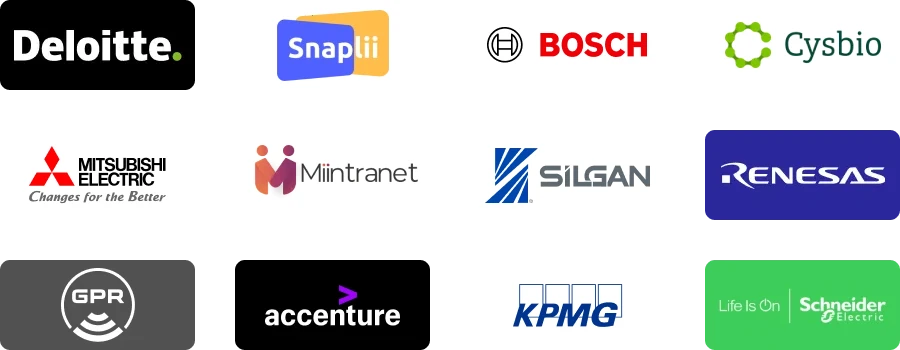| REPORT ATTRIBUTE |
DETAILS |
| Historical Period |
2019-2022 |
| Base Year |
2023 |
| Forecast Period |
2024-2032 |
| Percutaneous Tibial Neuromodulation Devices Market Size 2024 |
USD 99.95 Million |
| Percutaneous Tibial Neuromodulation Devices Market, CAGR |
8.3% |
| Percutaneous Tibial Neuromodulation Devices Market Size 2032 |
USD 189.15 Million |
Market Overview
The market for Percutaneous Tibial Neuromodulation Devices is projected to grow from USD 99.95 million in 2024 to USD 189.15 million by 2032, with a compound annual growth rate (CAGR) of 8.3%.
The growth of the Percutaneous Tibial Neuromodulation Devices market is driven by the increasing prevalence of overactive bladder (OAB) and other urological disorders, which has led to higher demand for non-invasive treatment options. These devices offer a promising alternative to traditional therapies, providing effective symptom relief with minimal side effects. Advancements in technology have also enhanced the efficiency and ease of use of these devices, further fueling market growth. Additionally, the rising preference for minimally invasive procedures and the growing awareness of percutaneous tibial neuromodulation’s benefits are expected to boost adoption. Moreover, the expansion of healthcare infrastructure in emerging markets and increasing investments in research and development are expected to accelerate the market’s growth trajectory.
Geographically, the market for Percutaneous Tibial Neuromodulation (PTNM) devices is primarily dominated by North America and Europe, driven by the high prevalence of overactive bladder (OAB) and faecal incontinence in these regions. North America benefits from advanced healthcare infrastructure, high awareness, and favorable reimbursement policies, contributing to the adoption of PTNM devices. Europe is also experiencing significant growth due to an aging population and increasing preference for minimally invasive treatments. Key players in the PTNM market include Medtronic plc, Cogentix Medical, Palex Medical SA, and Rainbow Medical Group. These companies are at the forefront of developing and innovating PTNM technologies, driving market expansion through product advancements, clinical research, and strategic partnerships. As the market matures, these companies are expected to play a crucial role in shaping the future of PTNM therapies, particularly by exploring new applications and improving device accessibility.
Access crucial information at unmatched prices!
Request your sample report today & start making informed decisions powered by Credence Research Inc.!
Download Sample
Market Insights
- The global PTNM devices market is expected to grow from USD 99.95 million in 2024 to USD 189.15 million by 2032, with a CAGR of 8.3%.
- Rising prevalence of chronic conditions like overactive bladder (OAB) and faecal incontinence is a key driver of market growth.
- Increasing preference for minimally invasive treatments, with shorter recovery times and fewer side effects, is fueling the adoption of PTNM devices.
- Technological advancements in PTNM devices are making them smaller, more comfortable, and easier to use, enhancing patient satisfaction and compliance.
- Limited awareness among healthcare providers and patients about PTNM devices remains a challenge, hindering broader adoption.
- Varying reimbursement policies across regions and complex reimbursement processes are barriers to market expansion.
- North America dominates the PTNM market with a 45% share, followed by Europe with a 30% share, due to high demand and favorable healthcare systems.
Market Drivers
Rising Prevalence of Overactive Bladder (OAB)
Overactive bladder (OAB) is a widespread condition affecting millions globally, characterized by symptoms such as frequent urination, urgency, and incontinence. Traditional treatments for OAB, including medications and surgical options, often have limited effectiveness or undesirable side effects. As a result, there is a growing demand for alternative therapies, particularly those that are minimally invasive and have fewer side effects. For instance, the National Overactive Bladder Evaluation (NOBLE) study found that OAB affects approximately 16.5% of the U.S. population. This increasing prevalence of OAB is a key driver for the adoption of Percutaneous Tibial Neuromodulation (PTNM) devices, which provide a promising non-invasive solution to manage OAB symptoms.
Favorable Reimbursement Landscape and Technological Advancements
The expanding reimbursement coverage for PTNM procedures in many regions is another crucial factor driving market growth. With better insurance support, PTNM becomes more accessible to a larger patient population, further encouraging healthcare providers to offer it as a treatment option. For instance, PTNM is covered by Medicare and many commercial insurers as a third-line therapy for OAB. Additionally, ongoing technological advancements in PTNM devices are improving their comfort, usability, and effectiveness. Smaller, more user-friendly devices are enhancing patient compliance and satisfaction, contributing to PTNM’s growing popularity.
Effectiveness and Safety of PTNM
Percutaneous Tibial Neuromodulation (PTNM) has proven to be highly effective in treating OAB symptoms, significantly improving patients’ quality of life. The procedure is minimally invasive, involving the stimulation of the tibial nerve to help regulate bladder function. PTNM boasts a low risk of complications, making it an attractive option for patients who seek an alternative to more invasive treatments. The safety and clinical efficacy of PTNM have contributed to its growing popularity as a viable treatment for OAB, driving market growth.
Growing Awareness and Acceptance
The growing awareness of PTNM’s benefits among both healthcare providers and patients is accelerating its adoption. As more positive clinical outcomes and patient testimonials become available, the acceptance of PTNM as a treatment for OAB continues to rise. This increasing recognition of its effectiveness in managing OAB symptoms is further fueled by the increasing availability of information and patient education, encouraging more individuals to seek this alternative therapy.
Market Trends
Rising Prevalence of Chronic Diseases and Expanding Therapeutic Applications
The increasing prevalence of chronic conditions such as overactive bladder (OAB) and chronic pain is significantly driving the demand for Percutaneous Tibial Neuromodulation (PTNM) devices. As the global population ages, the incidence of these chronic conditions is rising, resulting in a greater need for effective and minimally invasive treatment options. For instance, the CDC reports that an estimated 129 million people in the US have at least one major chronic disease. PTNM offers a non-invasive solution that is gaining popularity for managing OAB symptoms and chronic pain. Beyond its primary use for OAB, PTNM’s potential therapeutic applications are rapidly expanding. Clinical trials and research are exploring its efficacy in treating other conditions, including depression and anxiety, which could further propel market growth. As the evidence supporting PTNM’s broader therapeutic benefits grows, its adoption across a variety of medical fields is expected to increase, enhancing its market reach and contributing to its rising demand.
Technological Advancements and Growing Preference for Minimally Invasive Procedures
Continuous technological advancements in PTNM device technology are enhancing the overall patient experience, making these devices smaller, more comfortable, and easier to use. These innovations are directly contributing to higher patient satisfaction and compliance, which in turn drives the growth of the PTNM market. The ongoing development of user-friendly devices ensures that treatment sessions are more convenient, leading to improved outcomes for patients. Furthermore, the growing preference for minimally invasive procedures with shorter recovery times and fewer side effects is a key factor supporting the adoption of PTNM devices. Patients are increasingly opting for treatments that offer lower risks and quicker recovery, and PTNM aligns perfectly with this trend. As healthcare providers continue to adopt PTNM as a viable treatment option, driven by both technological improvements and patient preferences, the market is expected to grow significantly.
Market Challenges Analysis
Limited Awareness and Reimbursement Challenges
A significant challenge to the adoption of Percutaneous Tibial Neuromodulation (PTNM) devices is the limited awareness and acceptance of this technology among both healthcare providers and patients. Many healthcare professionals remain unfamiliar with PTNM and its potential benefits, which can lead to reluctance in recommending it as a treatment option. For instance, a systematic review found that factors such as anxiety, computer self-efficacy, and trust significantly affect the acceptance of healthcare technologies. Additionally, some healthcare providers may be hesitant to adopt new technologies without fully understanding their efficacy, hindering widespread usage. Compounding this issue are the varying reimbursement policies for PTNM, which can differ across healthcare systems and regions. The complexity of reimbursement processes adds another layer of difficulty, as patients may face delays or confusion when attempting to access the technology. These challenges in both awareness and reimbursement create barriers to patient access and treatment adoption, slowing down the growth of the PTNM market.
Device-Related Issues and High Treatment Costs
Another set of challenges for the PTNM market revolves around device-related issues and the high cost of treatment. Like any medical device, PTNM devices are prone to technical malfunctions that can disrupt treatment, leading to patient dissatisfaction. Additionally, the battery life of implantable PTNM devices can be limited, necessitating replacement procedures over time, which could lead to added costs and inconvenience for patients. Ensuring long-term patient compliance with PTNM therapy also presents challenges, as patients must consistently use and maintain the device, which can be demanding. Some patients may also experience side effects, further impacting their adherence to treatment. The high initial cost of PTNM devices, along with ongoing maintenance costs such as battery replacements and clinical follow-ups, can make these treatments less accessible for some patients. These factors contribute to the market’s challenges, as they increase the financial burden for both patients and healthcare providers.
Market Opportunities
Expanding Therapeutic Applications
One of the significant market opportunities for Percutaneous Tibial Neuromodulation (PTNM) devices lies in the expansion of their therapeutic applications. While PTNM is currently used primarily for managing overactive bladder (OAB), ongoing clinical research is exploring its potential in treating other conditions such as chronic pain, depression, and anxiety. As more evidence supports the efficacy of PTNM for these additional indications, the market can expect broader adoption in various medical fields. Expanding PTNM’s use beyond OAB opens up opportunities for growth in diverse therapeutic areas, attracting new patient populations and healthcare providers. This diversification of applications could significantly enhance the market’s growth potential, driving demand for PTNM devices across multiple medical specialties.
Technological Advancements and Aging Population
Technological advancements in PTNM devices present another key opportunity for market expansion. As device technology improves, the development of smaller, more user-friendly, and comfortable devices will increase patient satisfaction and compliance, fueling higher adoption rates. Additionally, the global aging population is a growing market driver for PTNM devices. As the elderly are more susceptible to chronic conditions like OAB, the demand for effective, minimally invasive treatments will rise. The combination of technological innovations and an aging demographic presents a compelling opportunity for PTNM device manufacturers to capture a larger share of the healthcare market. Enhanced device features, coupled with the increasing need for non-invasive treatments, positions PTNM as a strong contender in the evolving medical device landscape.
Market Segmentation Analysis:
By Application:
The Percutaneous Tibial Neuromodulation (PTNM) devices market can be segmented by application into faecal incontinence and overactive bladder (OAB). Overactive bladder remains the dominant application for PTNM, accounting for a substantial portion of the market. This is driven by the high prevalence of OAB in both aging populations and those with chronic conditions, leading to a strong demand for non-invasive treatment options. PTNM offers significant benefits for OAB patients, providing a minimally invasive alternative to traditional treatments like medications or surgery. Faecal incontinence, although a smaller segment, is also gaining attention as PTNM shows promise in managing this condition. As research expands the therapeutic applications of PTNM devices, the market for faecal incontinence treatment is expected to grow, contributing to the overall market expansion.
By End-User
The PTNM devices market is also segmented by end-user, including hospitals, ambulatory surgical centers, clinics, specialty care units, and others. Hospitals are the leading end-user segment due to their capacity to offer comprehensive care and advanced treatment options. The demand for PTNM devices in hospitals is driven by the growing prevalence of OAB and faecal incontinence, as well as the increasing adoption of minimally invasive procedures. Ambulatory surgical centers and clinics are emerging as significant end-users due to their cost-effective and patient-friendly settings, offering quick treatment options for non-invasive therapies like PTNM. Specialty care units, including those focused on urology and neurology, are also contributing to market growth by providing tailored treatments for patients with specific conditions. As the market matures, the inclusion of PTNM devices in various healthcare settings, including outpatient facilities and specialized clinics, will further drive adoption and accessibility.
Segments:
Based on Application:
- Faecal Incontinence
- Overactive Bladder
Based on End User:
- Hospital
- Ambulatory Surgical centers
- Clinics
- Specialty Care Unit
- Others
Based on the Geography:
- North America
- Europe
- Germany
- France
- U.K.
- Italy
- Spain
- Rest of Europe
- Asia Pacific
- China
- Japan
- India
- South Korea
- South-east Asia
- Rest of Asia Pacific
- Latin America
- Brazil
- Argentina
- Rest of Latin America
- Middle East & Africa
- GCC Countries
- South Africa
- Rest of the Middle East and Africa
Regional Analysis
North America
North America holds the largest market share for Percutaneous Tibial Neuromodulation (PTNM) devices, accounting for approximately 45% of the global market in 2024. This dominant position is driven by a combination of factors, including high healthcare expenditure, advanced healthcare infrastructure, and strong adoption of innovative medical technologies. The United States, in particular, has a significant share in this market due to the widespread prevalence of overactive bladder (OAB) and faecal incontinence, especially among the aging population. The increasing demand for minimally invasive treatments has led to greater acceptance of PTNM as an effective non-surgical alternative. Moreover, the favorable reimbursement policies and growing awareness among both healthcare providers and patients are further boosting market growth. As the healthcare system in North America increasingly shifts towards cost-effective and less invasive treatments, the demand for PTNM devices is expected to grow significantly in the coming years. Furthermore, advancements in PTNM technology are expected to continue driving market expansion in this region, solidifying its leadership position.
Europe
Europe represents the second-largest market for PTNM devices, holding a market share of around 30% in 2024. The region benefits from an aging population and a high incidence of OAB and related conditions, particularly in Western Europe. Countries such as Germany, the UK, and France are witnessing a growing adoption of PTNM devices due to the increasing preference for minimally invasive therapies over traditional surgical options. The European market is also supported by well-established healthcare systems that are receptive to innovative medical technologies. The rising awareness of PTNM’s effectiveness, combined with expanding reimbursement options across European nations, is contributing to the broader use of these devices in clinical practice. Additionally, ongoing clinical trials and research in Europe are exploring the potential of PTNM in treating a wider range of conditions, which is expected to further drive demand. With its robust healthcare infrastructure and a significant aging population, Europe is poised for continued market growth, positioning it as a key region in the global PTNM market.
Key Player Analysis
- Medtronic plc
- Palex Medical SA
- Cogentix Medical
- Rainbow Medical Group
Competitive Analysis
The competitive landscape of the Percutaneous Tibial Neuromodulation (PTNM) devices market is characterized by the presence of key players such as Medtronic plc, Cogentix Medical, Palex Medical SA, and Rainbow Medical Group. Leading players in the market are investing heavily in research and development to improve the efficacy and comfort of PTNM devices, making them more appealing to both healthcare providers and patients. These companies are exploring new applications for PTNM devices, such as treating conditions beyond overactive bladder, which can further expand their market potential. Additionally, improving device usability, such as enhancing patient comfort and ease of use, is a key focus area for staying competitive. Strategic partnerships, mergers, and acquisitions also play an important role in the competitive dynamics of the market, as companies aim to strengthen their product offerings and expand their geographic reach. The market is also characterized by increasing competition from new entrants, who are focused on offering cost-effective solutions. With the growing adoption of minimally invasive treatments, companies are under pressure to continuously innovate and provide advanced, user-friendly solutions to capture a larger share of the expanding market.
Market Concentration & Characteristics
The market for Percutaneous Tibial Neuromodulation (PTNM) devices exhibits moderate concentration, with a few key players holding a significant share of the market. These companies focus on developing and manufacturing advanced PTNM devices for treating conditions such as overactive bladder (OAB) and faecal incontinence. While the market is dominated by established players, there is also room for smaller, emerging companies to innovate and introduce cost-effective alternatives. The market characteristics are largely driven by the growing demand for minimally invasive treatments, with patients and healthcare providers increasingly opting for non-surgical solutions. This trend is further supported by the aging global population, which is more susceptible to chronic conditions like OAB, fueling the demand for PTNM devices.
Additionally, advancements in PTNM technology, such as smaller, more comfortable devices, enhance patient satisfaction and compliance, which strengthens the competitive position of companies in the market. The market is highly research-driven, with companies investing in clinical studies to explore new applications for PTNM devices beyond OAB. The competitive environment also encourages strategic partnerships and acquisitions to expand product offerings and improve market reach. As more healthcare providers and patients become aware of the benefits of PTNM, the market is expected to become increasingly dynamic, with a balance of market leaders and emerging players driving growth.
Shape Your Report to Specific Countries or Regions & Enjoy 30% Off!
Report Coverage
The research report offers an in-depth analysis based on Application, End User and Geography. It details leading market players, providing an overview of their business, product offerings, investments, revenue streams, and key applications. Additionally, the report includes insights into the competitive environment, SWOT analysis, current market trends, as well as the primary drivers and constraints. Furthermore, it discusses various factors that have driven market expansion in recent years. The report also explores market dynamics, regulatory scenarios, and technological advancements that are shaping the industry. It assesses the impact of external factors and global economic changes on market growth. Lastly, it provides strategic recommendations for new entrants and established companies to navigate the complexities of the market.
Future Outlook
- The PTNM devices market is expected to grow significantly, driven by increasing demand for minimally invasive treatments.
- Advancements in PTNM technology will lead to more compact, user-friendly, and effective devices.
- Expanding therapeutic applications for PTNM devices, such as treating chronic pain and depression, will drive market diversification.
- The aging global population will continue to fuel demand for PTNM devices, particularly for conditions like overactive bladder (OAB).
- Increased awareness among healthcare providers and patients about the benefits of PTNM will contribute to higher adoption rates.
- Favorable reimbursement policies in key regions will make PTNM treatments more accessible to a broader patient base.
- Competitive dynamics will intensify, with both established companies and new entrants vying to offer cost-effective and advanced solutions.
- Growing acceptance of PTNM as a standard treatment for OAB and faecal incontinence will solidify its position in the market.
- Emerging markets, particularly in Asia Pacific and Latin America, will present new growth opportunities for PTNM device manufacturers.
- Ongoing clinical research and trials will continue to unlock new potential applications for PTNM, further driving its market expansion.







